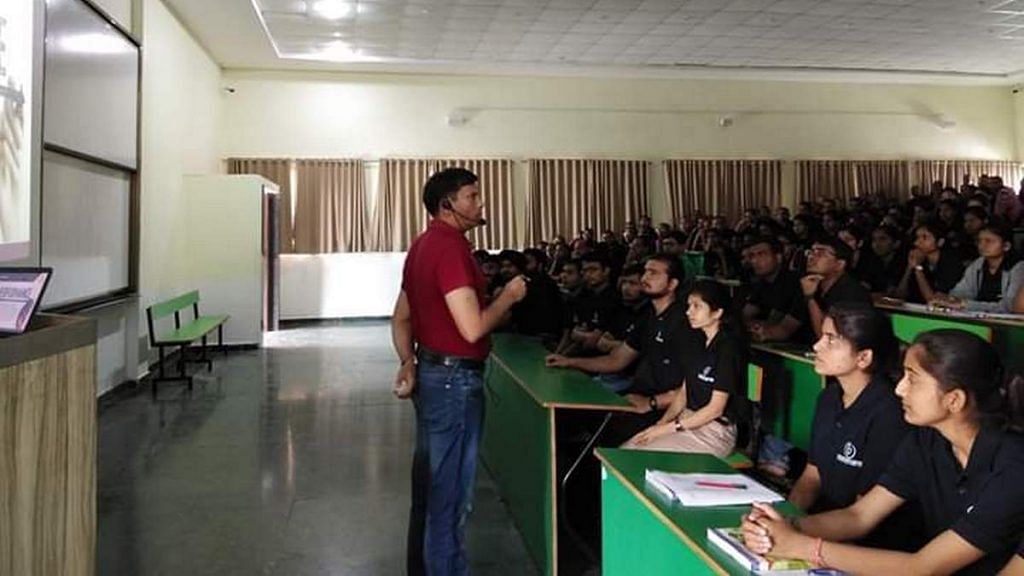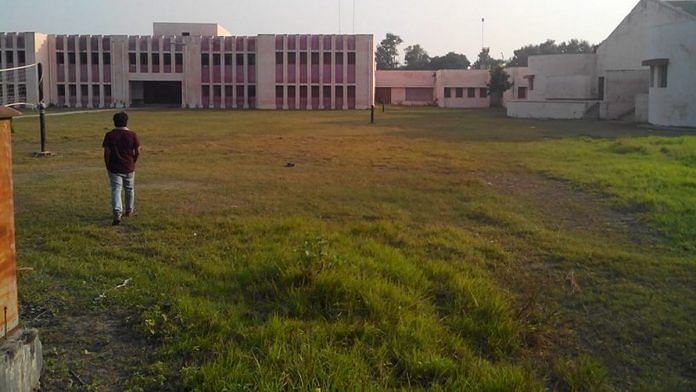New Delhi: When 19-year-old Kamlesh Mali walked into the Indian Institute of Technology (IIT)-Bombay campus last year, he was overwhelmed. Fresh from a village in the Hindi heartland, he felt intimidated by the shiny buildings and the confident city folk who seemed to know exactly what to do.
“I was lost in the big campus. I did not know how to finish my admission procedures, what documents to get, or which offices to go to,” Mali, who is pursuing a BTech degree in metallurgical engineering, told ThePrint over phone.
Fortunately for him, this sense of discombobulation did not last long. As an alumnus of a Jawahar Navodaya Vidyalaya (JNV) in Madhya Pradesh’s Junapani village, Mali had access to a strong support network to show him the ropes.
Students of the JNVs — a system of central schools for gifted students from rural areas — have an impressive record when it comes to cracking the grueling entrance exams to the elite IITs, but fitting into cosmopolitan university settings can be daunting for many. It is on this front that JNV alumni networks across IITs help newcomers overcome the culture shock.
At IIT-Bombay, for instance, the JNV network currently has about 250 students, who use a WhatsApp group as their primary communication platform. All freshers from JNVs are invited to join.
“We usually welcome other JNV students with a treat and then help them with the admissions procedure,” said Akash Kunthe, a fourth year BTech student who studied at a JNV school in Maharashtra’s Buldhana before joining IIT-B.
“Since most JNV students come from villages, they are not as polished as the city folk. They don’t know how to make conversation and what are generally the things to talk about. We share our experiences with them and help them assimilate,” Kunthe added.
In IIT-Gandhinagar, too, a JNV network swoops in to assist students with everything from admissions to placements. This sense of fellowship extends to other issues as well, said second-year mechanical engineering student Harshvardhan Parmar, who did his schooling from JNV Shajapur in MP.
“The brother of one of our seniors fell terribly sick last year, but his family could not afford the treatment. The entire group of JNV students rallied in his support and we managed to fundraise about Rs 7 lakh with help from our friends on and off campus,” Parmar said.
JNV alumni studying at IITs in Roorkee, Kanpur, and Kharagpur told ThePrint similar stories of how their support networks provided a social, emotional, and practical lifeline. Each of these campuses, students said, is home to about 300 JNV students.
Also read: No life, no hobbies, burnout, lost childhood — the price students pay for a prized IIT seat
‘At par with Kota, only better’
Over the years, the Jawahar Navodaya Vidyalayas have garnered a reputation for academic achievement, with a disproportionate number of students cracking the cutthroat competitive entrance exams for engineering and medical colleges.
Established in 1986 and run by an autonomous body under the Ministry of Education, JNV so far has 661 residential schools across India, all affiliated with the Central Board for Secondary Education (CBSE). The JNVs provide education from classes 6 to 12 and admit students who clear a selection test that is administered when they are in class 5.
When students are in class 10, they are required to take another selection examination. If they clear it, they are enrolled in special coaching programmes for the IIT Joint Entrance Exam (JEE) and the National Eligibility cum Entrance Test (NEET) for medical colleges.
These coaching programmes are run by an NGO called Dakshana Foundation, which in 2006 entered into an exclusive contract with the JNV governing body — the Navodaya Vidyalaya Samiti — to train students for competitive exams.
Dakshana conducts an examination across JNVs and based on the merit and financial status of the student, eligible candidates are selected for a two-year residential programme at one of the NGO’s six campuses.

“We are at par with the Kota model of training, only better,” said Dakshana Foundation’s chief executive officer, Commander Arun Kumar Mishra, an IIT alumnus himself. “We have a success rate of 70 per cent and aim to go higher. We provide 24-hour mental and academic support to our students.”
The NGO claims that it has trained 6,400 students since 2007 and currently has 1,400 students studying across its six campuses.
So far, 3,015 students have bagged IIT seats and 1,080 have gained admission to government medical colleges.
In addition to the two-year programme, Dakshana runs an even more rigorous year-long accelerated module, wherein class 12 students from JNVs who wish to take a drop year to prepare for such competitive exams are given training.
“We almost have a strict military style of working wherein the students are pushed to achieve academic excellence,” Mishra said. “Since these students are from the lower economic strata of society, they are willing to walk that extra mile and make that effort to achieve success.”
However, even if they are academically prepared, students sometimes face other social and emotional challenges at the IITs.
Social divide in IITs
Traditionally, the IITs have been a province of middle-class, upper-caste males. While affirmative action policies like reservation for women and depressed classes of society have attempted to address the skew, campus life is still more challenging for some groups than others.
Some of the most commonly articulated problems that students at IITs have complained of include caste-based discrimination, elitism, and performance pressures.
Last year, the Ministry of Education had in a response to a question in the Rajya Sabha said that 63 per cent of the dropouts from the top seven IITs were from the reserved categories.
IIT-Guwahati held the worst record with 88 per cent of its dropouts being from the reserved categories. IIT-Kharagpur had the highest number of dropouts, with 79 students leaving the institution over a period of five years. More than 60 per cent of those students were from the reserved categories.
In 2015, a survey was conducted in IIT-Bombay to check if students feel inferior for not being able to speak fluently in English. The step was taken after a student who had been struggling with his inability to speak in English and perform well academically, died by suicide.
Another report in 2013 found that the economic divide between the students in IITs is stark and only increasing year on year. The trend took form only after institutions stepped in to facilitate economically weaker students to be able to crack the JEE.
Dalit and Adivasi activists have long argued that the discrimination face by students from these communities is highly disproportionate.
The IITs, though, can be tough to navigate for others too. Previously, a campus counsellor at an IIT had told ThePrint under condition of anonymity that students who usually come to IITs are those who have continuously remained at the top of their school classrooms.
At IIT, though, they may feel lost among many other equally talented students. “A lot of students also sink into depression because they are no longer the face of academic brilliance that they are used to being. They sit in a classroom of several other students like them, making competing difficult for them. Far away from home, these students need a support system,” the counsellor said.
The challenge is that much harder for students who may also feel like social misfits. But when they band together, the sense of community becomes a source not just of comfort but pride.
As Parmar of IIT-Gandhinagar put it: “Being a JNV student is seen as a privilege on the IIT campuses.”
This story has been updated to reflect that the JNV scheme started in 1986.
(Edited by Asavari Singh)
Also read: ‘Need well-rounded professionals’ — why IITs, IIMs & IIITs are giving humanities a new thrust



